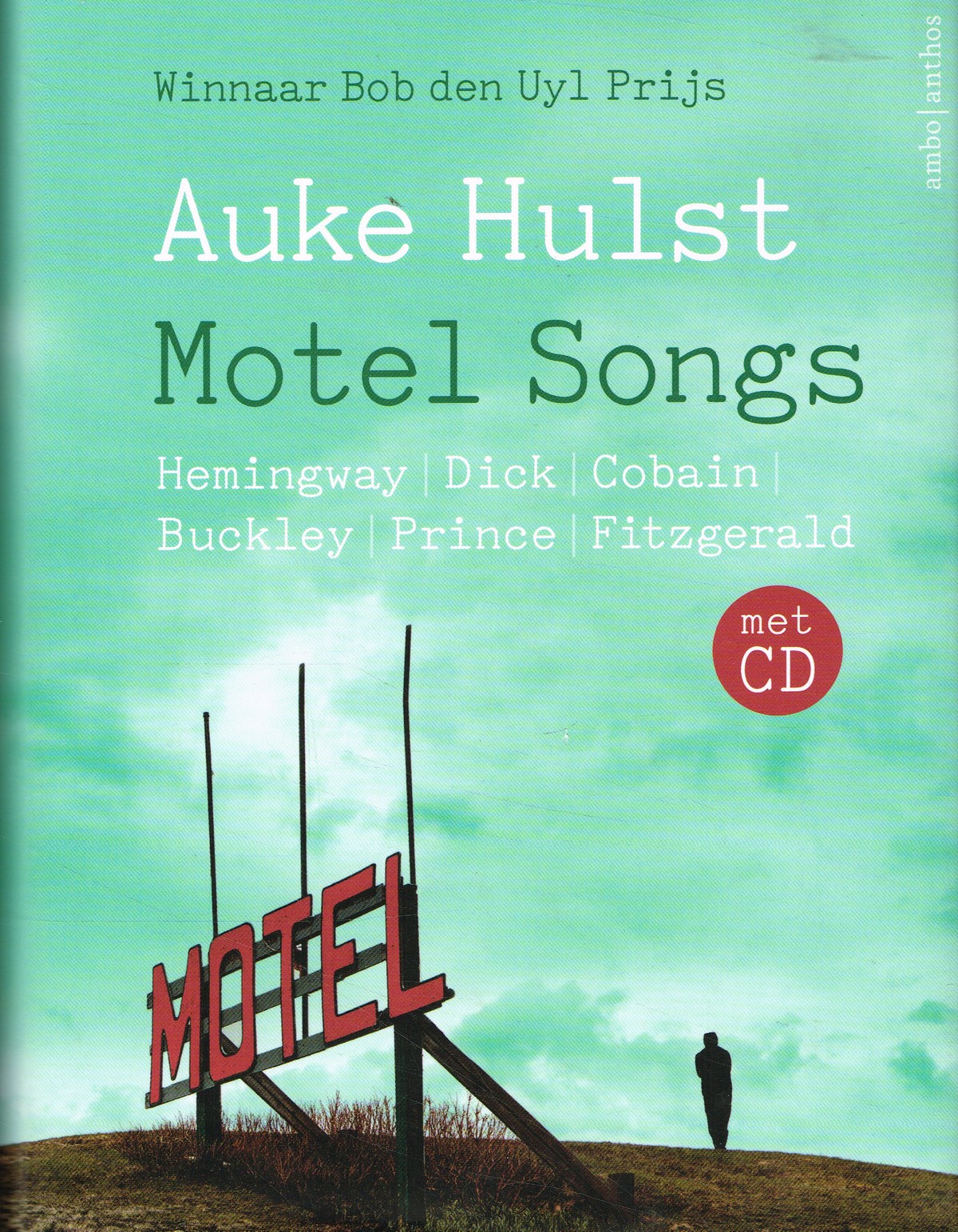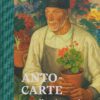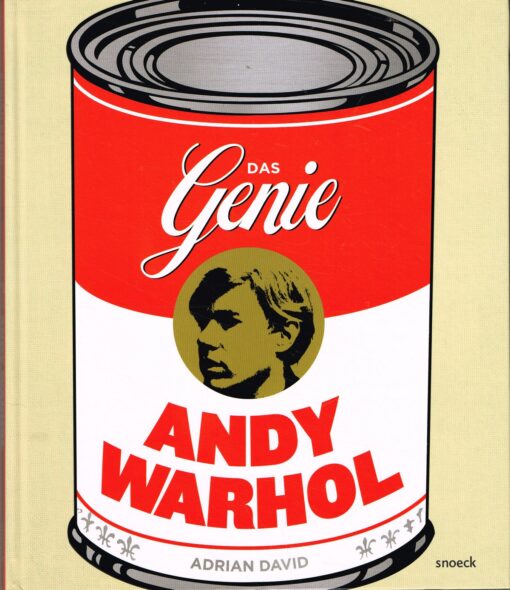Andy Warhol
Das Genie
€ 24,00 Oorspronkelijke prijs was: € 24,00.€ 9,90Huidige prijs is: € 9,90.
Uitverkocht
ISBN: 9789461612809.
Bindwijze:
pap
Taal:
duits
Uitgever:
Snoeck
Auteur:
Andy Warhol
Paginas:
112
Categorie: Kunst.
Platinblondes Haar, große Brille, kurzer schwarzer Mantel, enge Jeans, locker geknotete Krawatte, blasses Gesicht, ein zögerliches Lächeln? Andy Warhol. Begründer einen neuen Tradition, Schöpfer eines eigenen Universums mit eigenen Gesetzen und Regeln, das sich radikal von allem unterschied, das ihm vorausging. Er registrierte wie kein Zweiter das Banale und Alltägliche: Suppendosen, Geldscheine, Reklame, Porträts von Königinnen, Popstars und Sexgöttinnen. Gleichzeitig hielt er der Gesellschaft einen Spiegel vor.
Gerelateerde producten
kunst
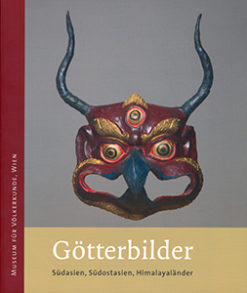
Götterbilder
Auch im Zeitalter der Globalisierung religiöses Denken sind das Fühlen und Handeln der Bewohner Süd- und Südostasiens und der Himalayaländer – lebendig wie vor zweitausend Jahren. In den großen in der Region entstandenen religiösen Systemen, dem Buddhismus und dem Hinduismus, unterscheidet sich die Beziehung zwischen den Menschen und ihren Göttern sehr stark von der unseren. 'Götterbilder' leistet mit einführenden Texten zu den Themen Globalisierung, Hinduismus, Buddhismus, Naga und Vietnam einen Beitrag, das eigene Verständnis der Welt mit dem des "Fremden" in Beziehung zu setzen. Snoeck96 blz
kunst
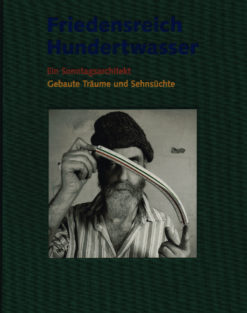
Friedensreich Hundertwasser
Schon mit dem Titel 'Friedensreich Hundertwasser - Ein Sonntagsarchitekt - Gebaute Träume und Sehnsüchte' macht Ingeborg Flagge deutlich, worum es ihr mit dieser Ausstellung eigentlich geht. Ihre Absicht ist es, zur Aufklärung des Rezeptionsphänomens Hundertwasser beizutragen. Seine kunterbunten phantastischen Bauwerke mit den goldenen Zwiebeltürmchen und den absurd gekurvten Formen genießen einerseits beim größten Teil der Bevölkerung enorme Popularität, werden andererseits aber von fast allen renommierten Architekten vehement abgelehnt. Deutsches Architektur Museumgeb - 248 blz
kunst

Guido van der Werve
In Palpable Futility wordt het gehele oeuvre van Guido van der Werve beschreven en afgebeeld en benaderen diverse auteurs het werk vanuit verschillende perspectieven. For English see below. Guido van der Werve heeft een bijzonder oeuvre opgebouwd rond tijdloze en universele thema's als de condition humaine. In het universum van Guido van der Werve zijn romantiek, de natuur en het sublieme nooit ver weg. Hij neemt de schoonheid en tegelijkertijd de nutteloosheid van het menselijk bestaan vaak met droge humor op de hak. In Palpable Futility wordt het gehele oeuvre beschreven en afgebeeld en benaderen diverse auteurs het werk vanuit verschillende perspectieven. Het werk wordt in een internationale kunsthistorische context geplaatst en naast een interview en een literaire bijdrage bevat het boek stukken over schaken en over de rol van muziek. Guido van der Werve is een van de meest vooraanstaande Nederlandse kunstenaars, zijn filmwerken zijn opgenomen in (inter)nationale collecties als Museum of Modern Art, Sammlung Goetz, Stedelijk Museum Amsterdam en Museum Boijmans Van Beuningen. >English< Guido van der Werve built up an extraordinary oeuvre around timeless and universal themes such as the human condition. In Van der Werve's universe, romance, nature and the sublime are never far away; his dry humour often targets the beauty-cum-futility of human existence. Palpable Futility describes and depicts Van der Werve's entire oeuvre. Different authors approach his work from different perspectives and place it in an international art-historical context. The book includes an interview and a literary contribution as well as articles about chess and the role of music. Guido van der Werve is one of the Netherlands' most prominent artists. His film works are included in (inter)national collections such as those of the Museum of Modern Art , Sammlung Goetz, Stedelijk Museum Amsterdam and Museum Boijmans Van Beuningen. Nai010geb - 208 blz
kunst
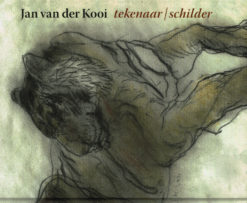
Jan van der Kooi
Jan van der Kooi werd geboren in 1957 (Bedum) en studeerde aan Academie Minerva in Groningen. De onderwerpen voor zijn werk zoekt hij in zijn eigen omgeving. Zijn schilderijen concentreren zich heel sterk op de kleuren van het licht - zonlicht, strijklicht, tegenlicht. Gefilterd of tegengehouden of omgebogen door glas, vitrage, ijzel. Of licht zoals weerkaatst vallend op een vloer. 'Het zijn', zegt Jan van der Kooi, 'studies in wit'. Als tekenaar excelleert Van der Kooi met zijn studies van allerhande dieren. Doorgaans uitgevoerd in krijt zijn zij zo overtuigend en zo levensecht dat je soms bijna zou vergeten dat het 'slechts' om tekeningen gaat. Naast Van der Kooi's dierstudies verdienen vooral zijn Hollandse landschappen - meestal uitgevoerd met penseel en gewassen inkt - speciale vermelding. Hij verstaat daarbij de kunst van het weglaten en weet licht in zijn werk te brengen. Een lange constante in Van der Koois oeuvre zijn verder zijn zelfportretten. Misschien is er na Rembrandt geen kunstenaar die het eigen gezicht zozeer tot inzet van studie heeft gemaakt. Jan van der Kooi kan het af zonder eigen galerie, gaat zonder trommels en trompetten door het leven en exposeert slechts eens in de vijf jaar, maar wordt desondanks gezien als de beste tekenaar van dit moment.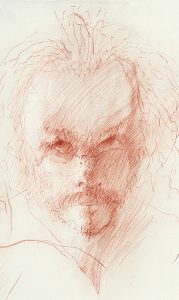 THOTH
THOTHPAP - 174 blz
